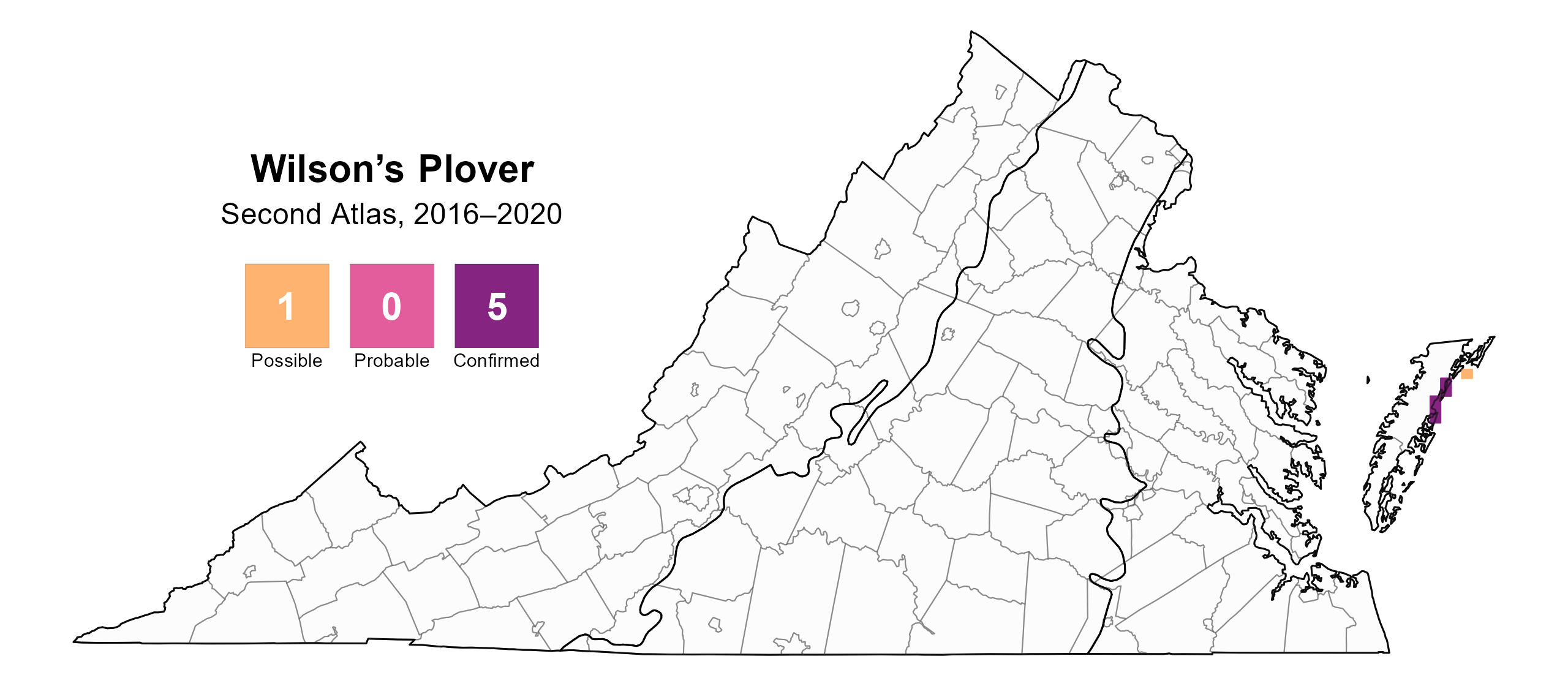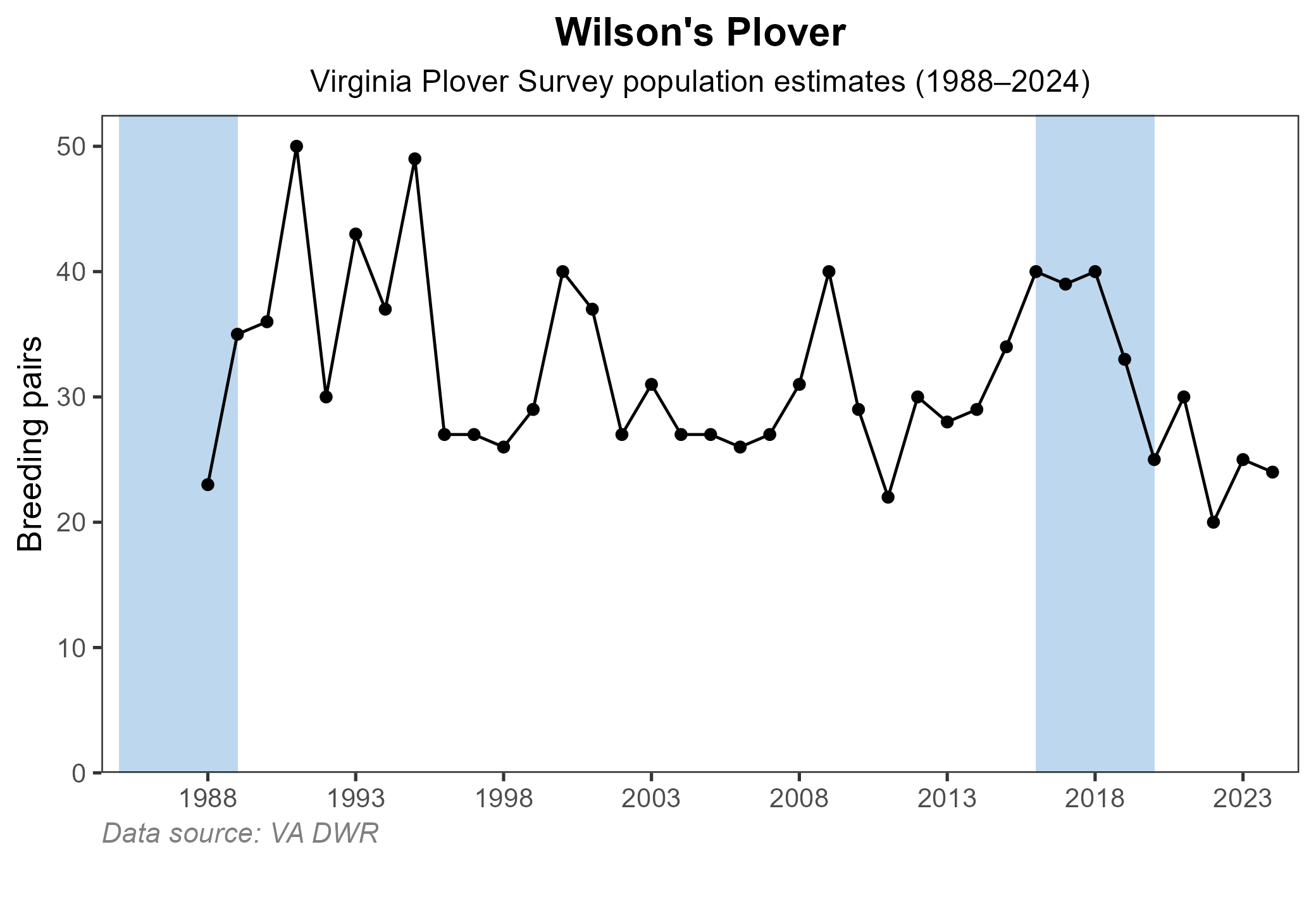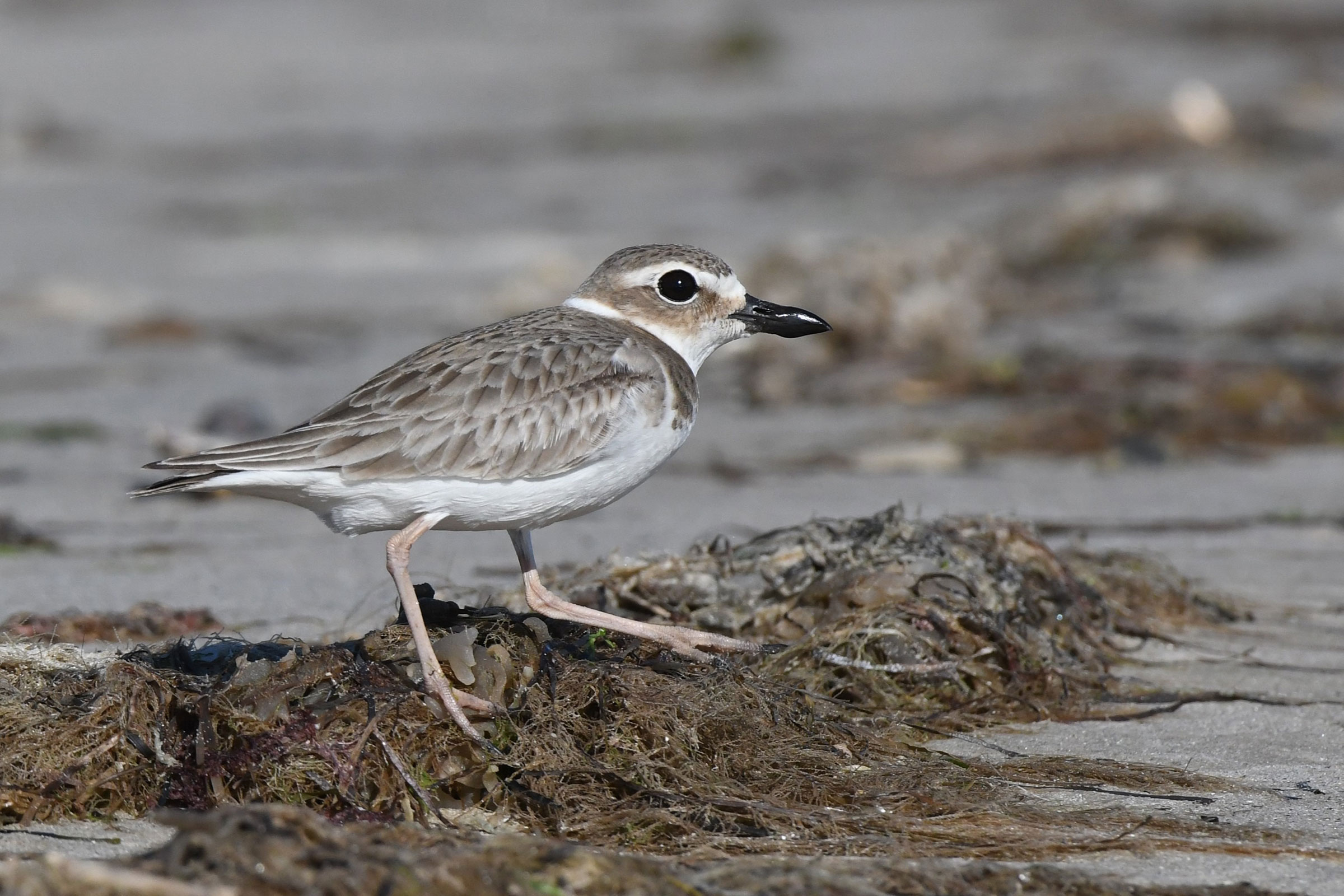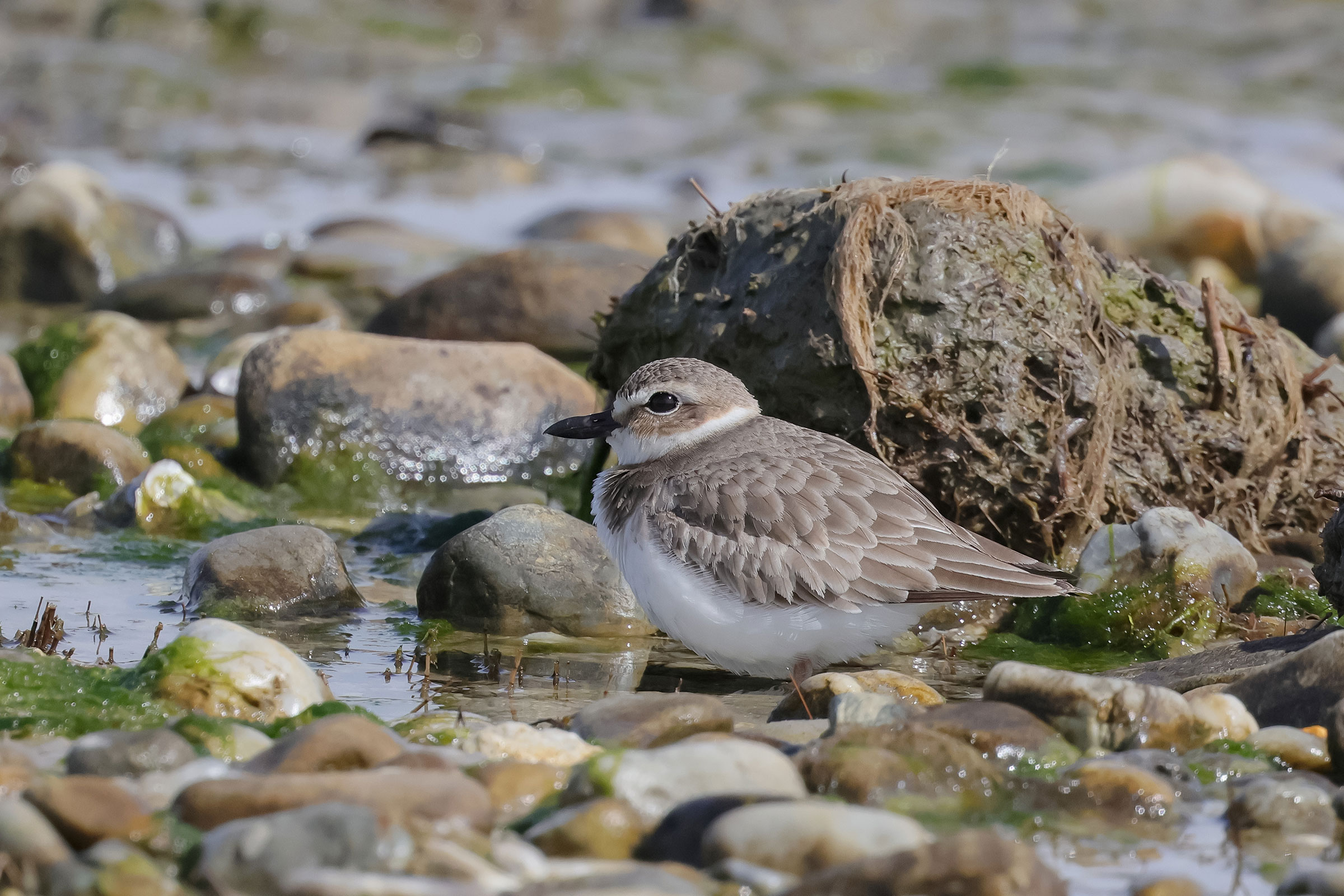Introduction
The Wilson’s Plover is a shy species that uses its distinctive thick bill to feed on fiddler crabs. Virginia represents the northernmost extent of the species’ current Atlantic coast population, which formerly ranged as far north as New Jersey (Zdravkovic et al. 2023). Even within its breeding range on coastal barrier islands, the species is difficult to locate due to its elusive nature. Wilson’s Plover is listed as a state endangered bird in Virginia.
Breeding Distribution
Because the species is rare, its distribution could not be modeled. For information on where Wilson’s Plovers occur in Virginia, please see the Breeding Evidence section.
Breeding Evidence
Wilson’s Plovers breed exclusively on Virginia’s barrier islands and were confirmed breeders in five blocks, all of which were in Accomack County (Figure 1). Breeding sites included Assateague Island, Cedar Island, and Metompkin Island. These confirmed locations largely mirrored those recorded during the First Atlas, although the overall distribution of known breeding sites has contracted (Figure 2). No Wilson’s Plovers were confirmed breeding in Northampton County, where they had been documented during the First Atlas.
There were few observations of this rare species’ breeding behaviors. Wilson’s Plover nests had eggs from April 29 to June 6 (Figure 3). Young were observed from June 6 to July 25. Wilson’s Plovers were occasionally observed in proximity to nesting Piping Plovers (Charadrius melodus) and Least Tern (Sternula antillarum) colonies. For more general information on the breeding habits of the Wilson’s Plover, please refer to All About Birds.

Figure 1: Wilson’s Plover breeding observations from the Second Atlas (2016–2020). The colored boxes illustrate Atlas blocks (approximately 10 mi2 [26 km2] survey units) where the species was detected. The colors show the highest breeding category recorded in a block. The numbers within the colors in the legend correspond to the number of blocks with that breeding evidence category.

Figure 2: Wilson’s Plover breeding observations from the First Atlas (1985–1989). The colored boxes illustrate Atlas blocks (approximately 10 mi2 [26 km2] survey units) where the species was detected. The colors show the highest breeding category recorded in a block. The numbers within the colors in the legend correspond to the number of blocks with that breeding evidence category.

Figure 3: Wilson’s Plover phenology: confirmed breeding codes. This graph shows a timeline of confirmed breeding behaviors. Tick marks represent individual observations of the behavior.
Population Status
Wilson’s Plovers are monitored alongside Piping Plovers and American Oystercatchers (Haematopus palliatus) by several organizations, including the Virginia Department of Wildlife Resources (VDWR), The Nature Conservancy, and the U.S. Fish and Wildlife Service, as part of the Virginia Plover Survey. Since 1988, the breeding population of Wilson’s Plovers in Virginia has fluctuated between 20 and 50 pairs (VDWR 2024). The number of breeding pairs increased by 8% between 1986 and 2023 (VDWR, unpublished data). Wilson’s Plover estimates generally exceed those of Piping Plovers.
Additionally, the VDWR began conducting productivity studies in 2004. These studies revealed that even though Wilson’s Plover fledge success is relatively high, the number of breeding pairs remains low, which may suggest that Piping Plovers and American Oystercatchers are outcompeting Wilson’s Plovers on the barrier islands where all three species share the same nesting habitats. Another reason the population is not increasing may be because Virginia is the northern extreme of the nesting range and there may be some breeding requirement that is absent or failing to meet the needs of a growing population.

Figure 4: Wilson’s Plover population trend for Virginia’s Coastal Plain. This chart illustrates the number of breeding pairs as estimated by the Virginia Department of Wildlife Resources surveys. The vertical light blue bars represent the periods corresponding to the First Atlas (1985–1989) and Second Atlas (2016–2020).
Conservation
Wilson’s Plover is classified as a Tier I Species of Greatest Conservation Need (Critical Conservation Need) in Virginia’s Wildlife Action Plan and is listed as endangered in the state (VDWR 2025). The species has been recommended for federal listing under the Endangered Species Act (Zdravkovic 2013).
As with other beach-nesting birds, Wilson’s Plovers can be protected through measures that restrict human disturbance and nest predation, such as posting closure signage around key nesting areas, engaging in annual predator management, and maintaining protective public use policies on the barrier islands. Like other coastal species, Wilson’s Plovers face ongoing threats from rising sea levels, which will reduce the extent of available beach nesting habitat over time.
Interactive Map
The interactive map contains up to six Atlas layers (probability of occurrence for the First and Second Atlases, change in probability of occurrence between Atlases, breeding evidence for the First and Second Atlases, and abundance for the Second Atlas) that can be viewed one at a time. To view an Atlas map layer, mouse over the layer box in the upper left. County lines and physiographic regional boundaries (Mountains and Valleys, Piedmont, and Coastal Plain) can be turned on and off by checking or unchecking the box below the layer box. Within the map window, users can hover on a block to see its value for each layer and pan and zoom to see roads, towns, and other features of interest that are visible beneath a selected layer.
View Interactive Map in Full Screen
References
Virginia Department of Wildlife Resources (VDWR) (2024). 2024 Virginia plover survey. Virginia Department of Wildlife Resources. Henrico, VA, USA.
Virginia Department of Wildlife Resources (VDWR) (2025). Virginia wildlife action plan. Virginia Department of Wildlife Resources, Henrico, VA, USA. 506 pp.
Zdravkovic, M. G. (2013). Conservation plan for the Wilson’s Plover (Charadrius Wilsonia), version 1.0. Manomet Center for Conservation Sciences, Manomet, MA, USA.
Zdravkovic, M. G., C. A. Corbat, and P. W. Bergstrom (2023). Wilson’s Plover (Anarhynchus wilsonia), version 1.1. In Birds of the World (P. G. Rodewald, Editor). Cornell Lab of Ornithology, Ithaca, NY, USA. https://doi.org/10.2173/bow.wilplo.01.1.




